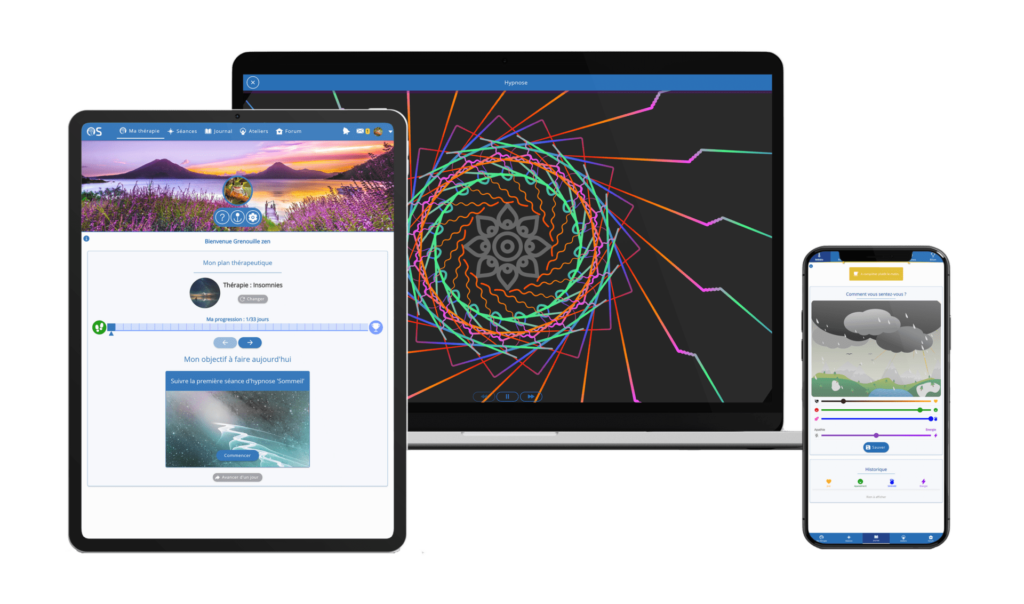
In a world where stress and anxiety are omnipresent, it's crucial to develop effective techniques for regaining inner calm. In this blog, we explore Gilbert Dagon's tips and tricks for navigating calm waters in the face of everyday challenges.
Understanding Stress, Anxiety and Anxiety
In our daily lives, stress, anxiety and anguish are common emotions that can sometimes seem overwhelming. Understanding these concepts is essential to managing them more effectively. Stress is often seen as a natural response to situations perceived as threatening. It can be positive, motivating us to act, or negative, paralyzing us.

Anxiety, on the other hand, is a more persistent reaction, often linked to future concerns. It can manifest itself as nervousness or apprehension, affecting our ability to function on a day-to-day basis. Anguish, on the other hand, is a more intense form of anxiety, often associated with panic attacks.

The Different Types of Stress
It's important to distinguish between good stress and bad stress. Good stress, or "eustress", drives us to excel, to achieve our goals. It can occur before an important event, such as a job interview, when excitement is present.

Bad stress, or "distress", on the other hand, can overwhelm us. It manifests itself in physical and psychological symptoms, such as headaches, sleep disturbances or increased irritability. Understanding this distinction helps us to better manage our emotions.

Causes of Stress and Anxiety
- Environmental factors : Pressures at work, relationship problems, or major life changes.
- Biological factors : Genetic predisposition, chemical imbalances in the brain.
- Psychological factors : Limiting beliefs, perfectionism or lack of self-confidence.

These different factors can interact to exacerbate our stress and anxiety levels. It is essential to identify our personal triggers in order to better manage them.

How to Manage Stress and Anxiety
Effective strategies exist for managing stress and anxiety. Here are some practical approaches:
- Mindfulness practice: Meditation and conscious breathing can help calm the mind and reduce anxiety.
- Physical activity : Regular exercise releases endorphins, improving our mood and reducing stress.
- Setting priorities : Organizing your tasks and setting realistic goals can reduce the pressure you feel.
- Social support : Talking about your concerns with friends or professionals can bring relief and new perspectives.

Open Synapse Stress Management Tools
Open Synapse offers a variety of tools to help manage stress and anxiety. Through online hypnosis sessions, users can access relaxation and mindfulness techniques at any time.

These sessions are designed to be accessible and practical, enabling everyone to find moments of calm in their often hectic lives. In addition, specific programs target issues such as work-related stress or sleep disorders.

Conclusion
Managing stress, anxiety and anguish is an ongoing process. By understanding these emotions and using the right tools, it's possible to regain balance and navigate life's challenges more serenely.
Strategies for Managing Stress and Anxiety
To manage stress and anxiety effectively, it's essential to adopt a variety of strategies. Each individual is unique and may react differently to different techniques. Here are a few strategies that have proved effective:

1. Mindfulness practice
Mindfulness involves paying attention to the present moment, without judgment. This practice helps reduce anxiety by anchoring us in the moment. Guided meditation or mindful breathing exercises can be integrated into your daily routine.
2. Regular physical activity
Exercise is a great way to release endorphins, the happy hormones. Whether it's a simple walk, yoga or an intense workout, physical activity helps to reduce stress and improve mood.

3. Prioritization
Organizing tasks in order of priority can lighten the mental load. Use to-do lists to focus on what's important and avoid feeling overwhelmed.

4. Social support
Don't underestimate the importance of social relationships. Sharing your concerns with friends or loved ones can offer emotional relief and help you see things in a different light.

5. Relaxation techniques
Techniques such as deep breathing, visualization or even yoga can help reduce stress. Taking a few minutes each day to focus on your breathing can make a big difference.

Learn to Breathe: Cardiac Coherence Techniques
Cardiac coherence is a breathing regulation technique that helps stabilize the heartbeat and reduce stress. It involves breathing at a regular rhythm to harmonize the relationship between the heart and the brain.

How to Practice Cardiac Coherence
- Choose a quiet moment: Find a place where you can concentrate without distractions.
- Adopt a comfortable posture: Sit or lie down in a position that makes you feel comfortable.
- Regulate your breathing: Inhale deeply through the nose for 5 seconds, then exhale through the mouth for 5 seconds.
- Repeat : Continue this exercise for 5 to 10 minutes.

The benefits of Cardiac Coherence
This technique has many benefits, including:
- Reduced stress and anxiety.
- Improved concentration and mental clarity.
- Emotional stabilization.
- Better regulation of heart rate.

Conclusion and Call to Action
Managing stress and anxiety requires a proactive approach. By integrating these strategies into your daily routine, you'll be better able to navigate through life's challenges. Don't wait until stress becomes overwhelming to take action. Take the lead and explore these techniques.

We invite you to share your experiences and ask questions about the techniques that interest you. The community is here to support you on your journey to wellness.
















































